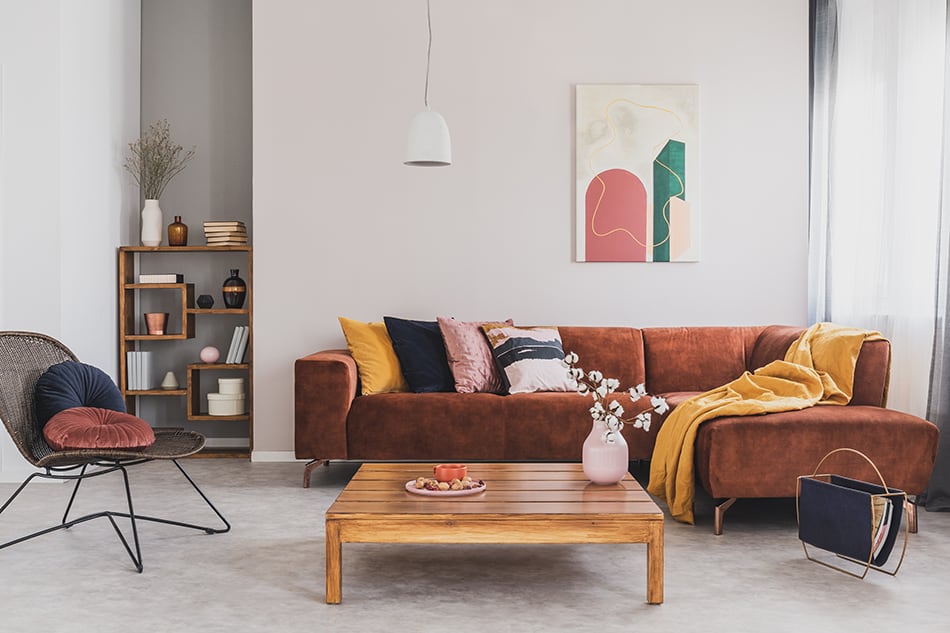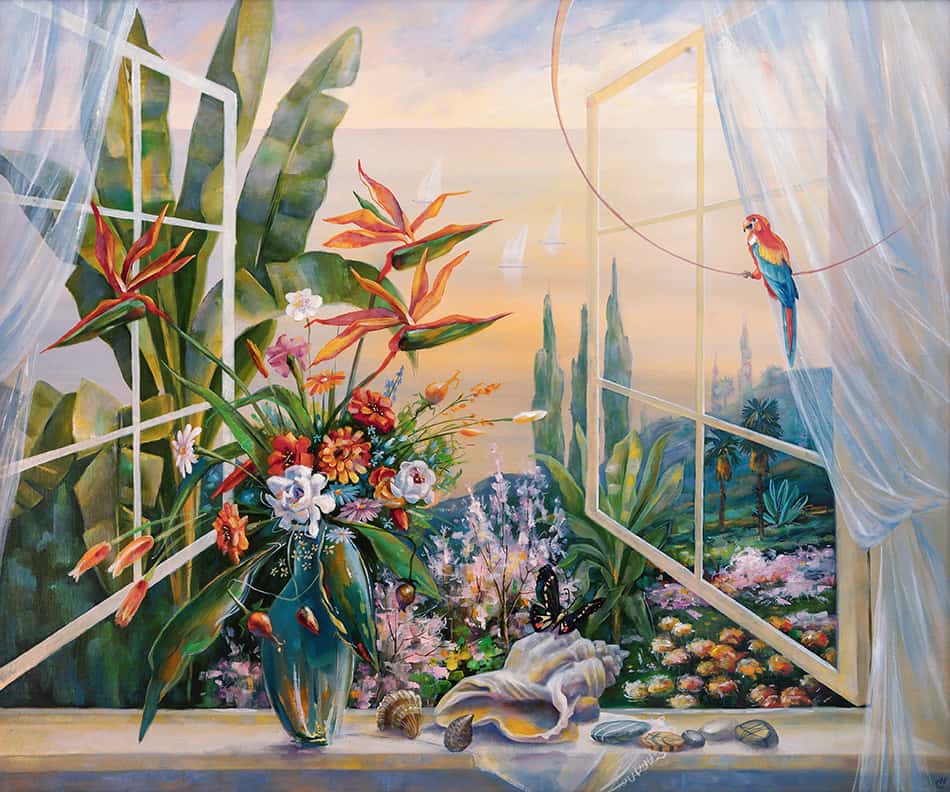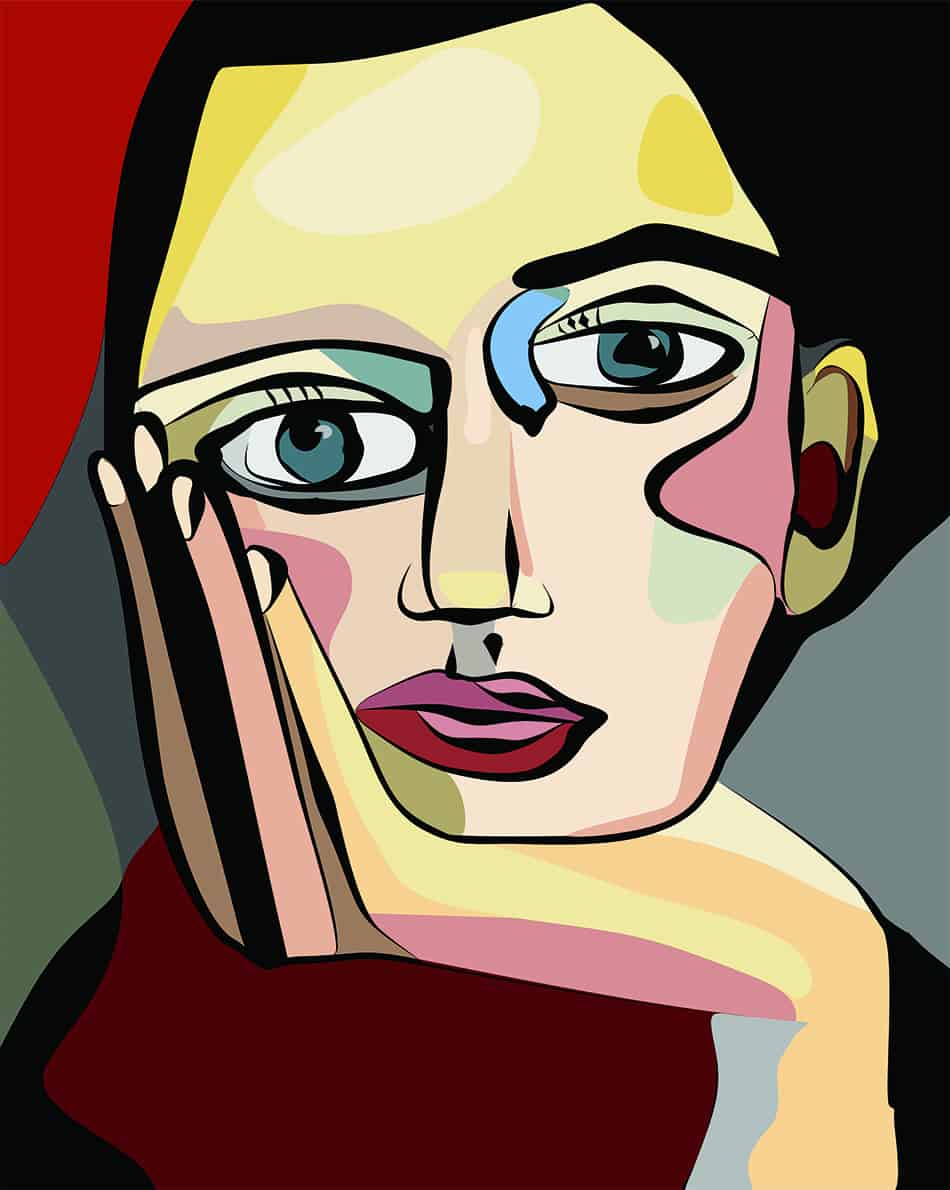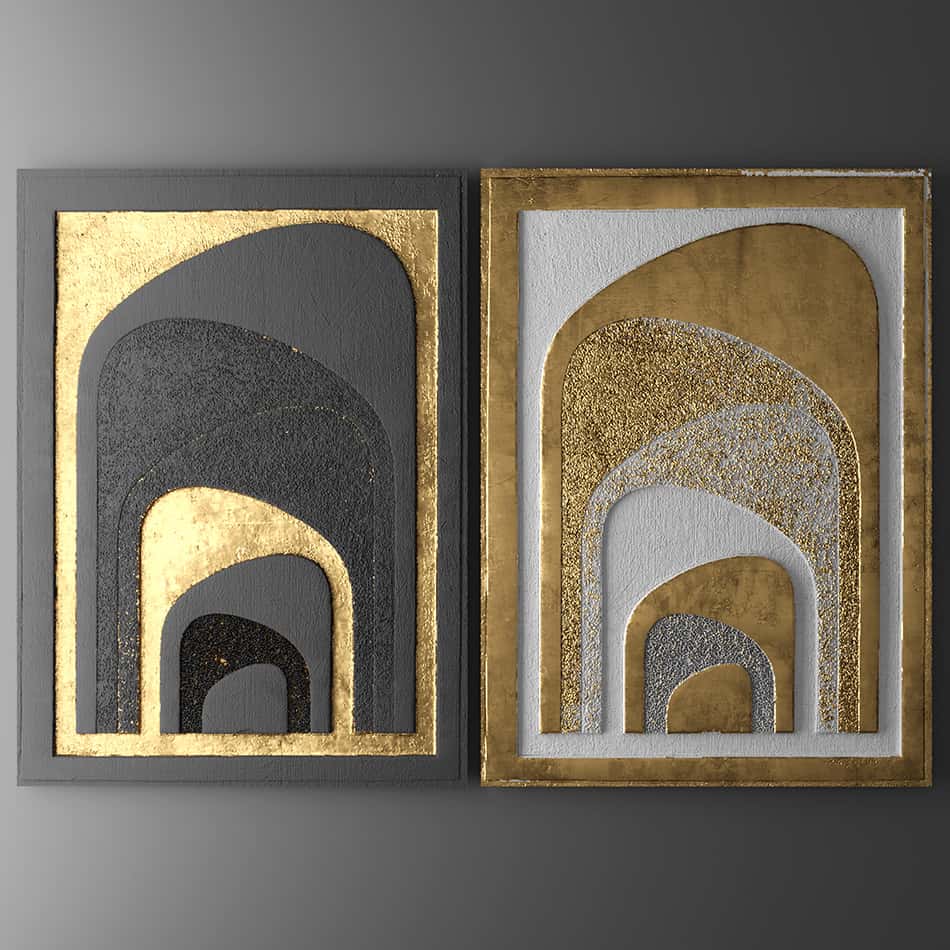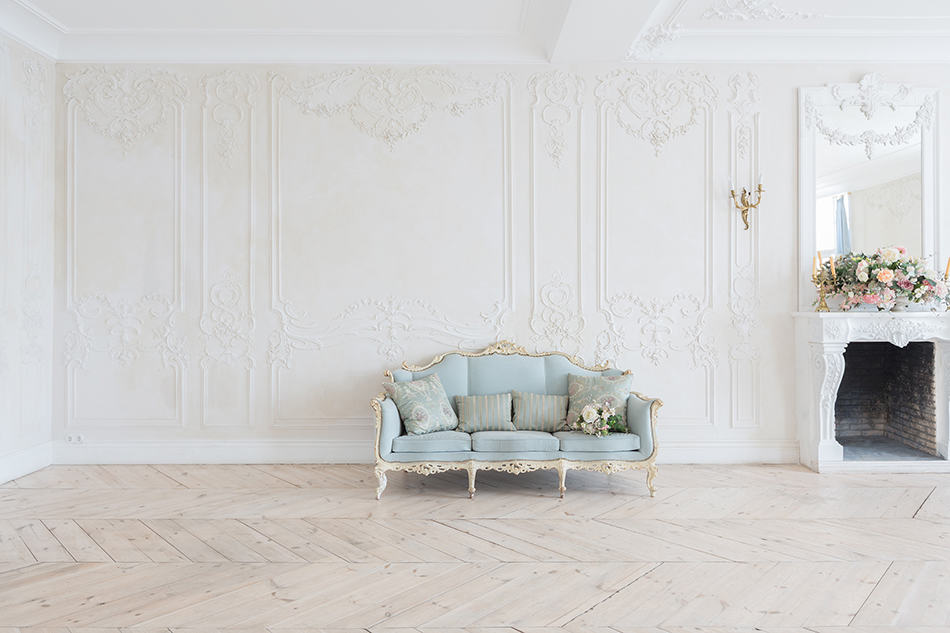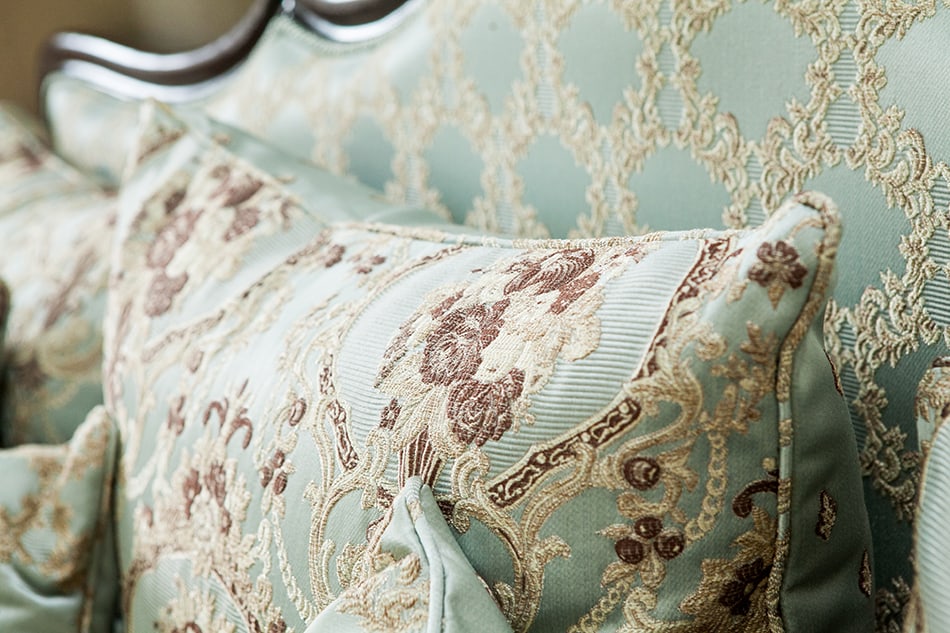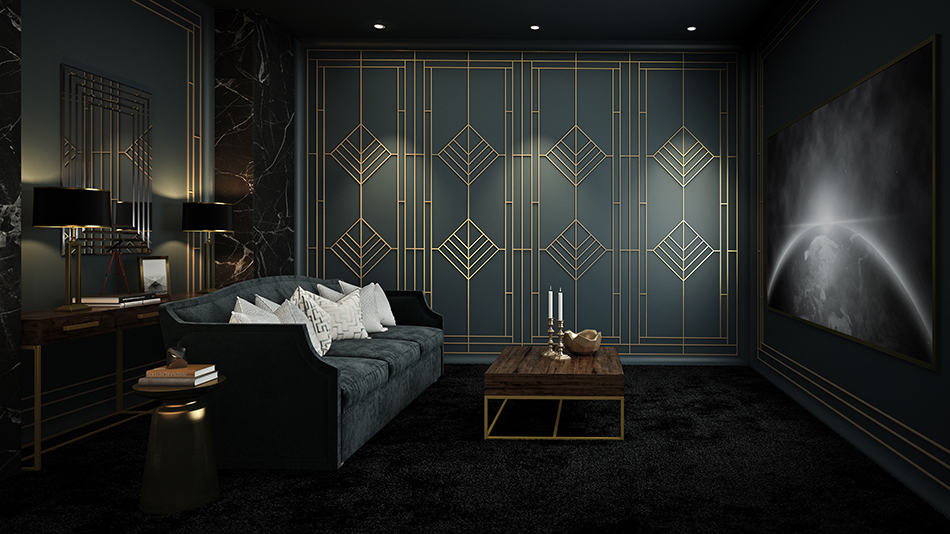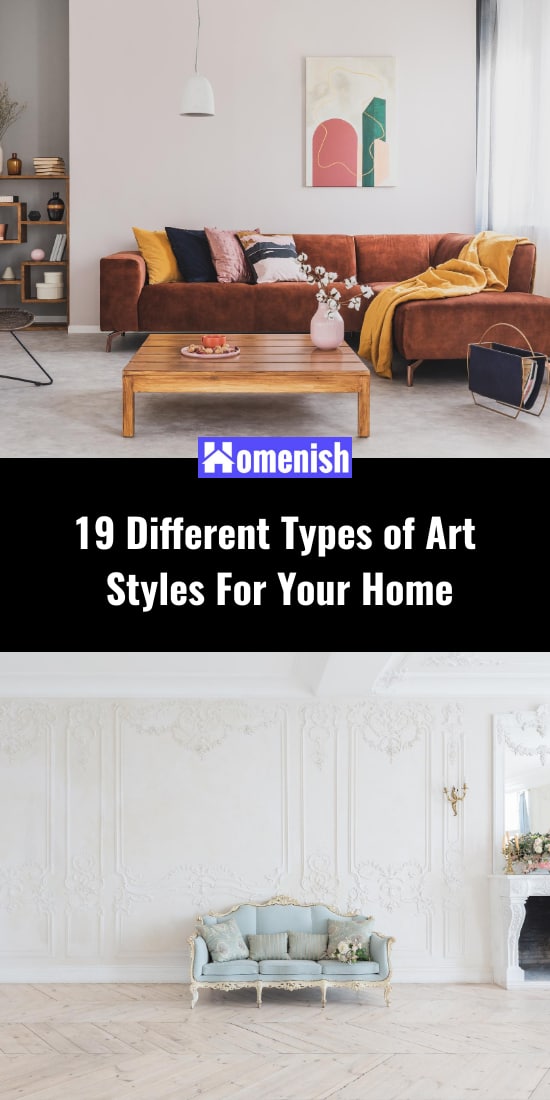Art is the highest expression of the human spirit. Also, art helps make one’s house a home. Whether it is a valuable art collection of acclaimed artists’ art or artwork coming from your family members, the art on the walls, on the shelves, and in the corners define your home’s atmosphere.
The artwork that you bring into your home should work harmoniously with the overall interior design style. Not every artwork will match every style, and discrepancy in this respect can create an unfavorable visual impression and atmosphere. A bit disheartening, but always remember that the first art piece that catches your eye or warms your heart may not be the best choice for your room.
However, by learning about art and training your eye, you will be able to recognize the perfect art piece for you very quickly. Don’t see this step as a waste of time. Learning about art and the history of art, soaking in and understanding the evolution of artistic styles is not only good for your interior.
Knowing about art enriches your entire life experience, makes you more culturally sophisticated, and opens up a lot of possibilities – including creative and business endeavors.
Now, let’s explore the most significant types and styles of art that could make a way into your home. To avoid any confusion, I will focus on types of art that are readily encountered in interiors.
Let’s go!
Paintings
No matter how hard recent art movements are trying to re-define art, a painting on canvas remains a sort of an epitome of art. One can hardly imagine an artistically-inclined interior without any canvas (mostly in the form of an oil painting).
However, precisely because of it that some people believe that they can put just any painting on the wall and that it would somehow magically make the space more artsy and tasteful. Huge mistake there.
Throughout the history of art, painting styles have evolved and diverged – and greatly. That is why you need knowledgeable advice on incorporating different painting styles with different types of interior. Of course, you can always educate yourself and choose to become your own expert. Let’s explore the painting style basics.
Painting styles
People have been involved in painting for a long, long time – since our ancestors were living in caves, so it is no wonder that painting is an art form with the greatest diversity of styles.
Of course, we will not touch upon prehistory here, although the last style mentioned here has some connections with it. Our focus will be on the styles occurring in more recent human history. Oil paintings as we know them today have existed in Europe at least since the 12th century. Here is a quick overview of most present styles of painting.
Realism
Realism, also known as naturalism, is a style that tries to depict painting subjects as realistically as possible.
A tendency to do this in painting was known since the earliest beginnings of painting art in the Paleolithic era when then-patients developed astoundingly realistic depictions of animals on cave walls.
From ancient Greece and Rome and onwards into the Renaissance and then the 19th century, realistic, illusionary painting continued to evolve almost without a stop. “Classical” paintings often belong to the realm of realism, and great painters such as Da Vinci, Dürer, Vermeer, and Rembrandt all followed realism as a predominant style.
In the 19th century, realism ditched any surreal romanticism-related details and went for a more raw image – which is evident in paintings by Gustave Courbet, for example.
Some of the typical classical motives of realist paintings are portraits, still nature, and landscapes.
In the 1950s, another art style evolved out of realism. It was fantastic realism, which depicts motives that are a product of imagination in a realistic manner and with great precision. The most famous name from the original Vienna School Of Fantastic Realism is probably Ernst Fuchs.
Realism paintings can go along with various interior setups, fitting naturally with classical, antique, rustic, and classic-leaning modern ones. They can even be tastefully fitted within modern minimalist interiors – although this takes some caution.
Hyperrealism
Hyperrealism, or photo-realism, takes realism to a whole new level of accuracy. Influenced by classical Baroque and Renaissance works but developed with the gift of modern tools and techniques, these paintings are so precisely done that you may mistake them for photographs. Some notable artists include Claudio Bravo, Gottfried Helnwein, Nur Koçak, and others.
Hyperrealism may also depict people or objects.
Hyperrealism paintings do not fit very well into antique and classic interiors and look better within modern interiors.
Impressionism
Impressionism is a reaction to the strict precision of realism. The movement evolved in the 19th century within a group of Paris-based artists and is characterized by paintings made with small but visible brush strokes, everyday subjects such as landscapes and ordinary people, and emphasis on capturing natural light and movement. Not much later, impressionism gave birth to Neo-Impressionism, Post-Impressionism, Cubism, and Fauvism.
The most famous impressionist painter is probably the founder of the movement, Claude Monet.
Vincent Van Gogh is also often mentioned as an impressionist; however, his work belongs to post-impressionism.
Impressionistic paintings do not fit very well with modern, minimalist apartments. There is a fondness for nature and certain coziness about them that makes them suitable for spaces with a lot of natural materials. The natural lightness of strokes and passion for the light makes them a good placement within areas where white or other very light colors dominate.
Pop Art
Born in the 1950s, Pop Art stemmed from the mass consumer culture – mass media, advertising, and other everyday images of the day. Pop Art transcends these seemingly superficial and cheap images into timeless works of art that became a symbol of an era and carry the visual stamp of the mid-20th century.
The most famous Pop Art painters were Andy Warhol and Roy Lichtenstein. Keith Haring‘s work also counts as Pop Art, but his paintings had more abstract and naive/primitive elements – so he probably deserves a category of his own.
Pop Art paintings are ill-fit with traditional, rustic, or classic interiors. Instead, they match well with modern and contemporary interiors – both minimalistic and detailed. In a predominantly white or black-and-white space, these artworks can be used to add a splash of color. They can fit into the more colorful interiors as well – just be careful that you don’t overdo it.
Pop Art designs are also often available and work well in the form of prints and even posters. (unlike many other types of paintings).
Cubism
Considered one of the most influential art movements of the 20th century, Cubism stems out of the early-20th century avant-garde, and it has changed European fine arts forever.
Cubism was a slap in the face of traditional, classical painting craft and realism, rejecting traditional views on perspective and modeling and embracing flat, two-dimensional picture planes and subject depiction, often featuring sharp, unnatural lines. Not rarely, Cubist paintings often include a strong societal or personal subtext and commentary – such as Picasso’s Guernica.
The best-known Cubism artist is surely Pablo Picasso, accompanied by Georges Braque, Paul Klee and others. Salvador Dali and Frida Kahlo also find their place under the Cubism umbrella, although their work also belongs to Surrealism and Fantastic Realism, respectively.
Within an interior, Cubism can fit within classical, modern, and contemporary interiors, depending on the exact style of the artwork.
Abstract
Abstract painting is a modern painting movement that plays with and studies colors, shapes, patterns, lines, and shadows – creating an otherworldly visual language rather than trying to depict any kind of realistic objects or creatures.
The properties of abstract art vary greatly among artists – from a simple Black Square by Kazimir Malevich (most likely the first painting ever that wasn’t a painting of something) to colorful and playful like Wassily Kandinsky.
A subcategory of Abstract art is Minimalist (abstract) art – with the most famous example being Piet Mondrian’s Tableau I, whose basic color geometric (square shapes) and black lines will become defining features of his art.
Due to its unbound but still very stylish nature, abstract art is very popular in interior design and can fit within various (but mostly modern and contemporary) homes.
Naive paintings
Naïve art is defined as a type of artwork created by an uneducated, untrained naive artist. Artwork by trained artists emulating this style is called primitivism or pseudo-naïve art.
With intense colors and not-so-realistic shapes and lines, Naïve paintings often have an otherworldly, dreamy quality, even when depicting real-life events.
Naive paintings work well in traditional, folk, and rustic interiors. They often feature some intense colors, so be aware of that when trying to incorporate them into spaces where there are already many things going on color-wise.
Watercolor paintings – Aquarelle
Aquarelle or watercolor painting is a painting technique that uses a special kind of paint – transparent watercolors instead of typical opaque paints. The technique gives airy quality to the pictures. Despite that, in skillful hands, aquarelles can produce an impressive accuracy level, so the technique is even used in scientific illustration.
Watercolor painting first became popular in landscape paintings of the end-19th century France. Obviously, the time the place of aquarelle uprise, as well as the atmosphere of the paintings, somewhat coincides with impressionism.
Because of the specific water-based paints, aquarelle is done on paper – usually the special type suitable for these very watery paints.
The way aquarelle paintings fit into your home depends on the style of the painting itself, but the inherent lightness and light background make it more suitable to light interiors – with a lot of natural light. Aquarelle paintings can be a good way to add some true art to children’s rooms, where oil paintings may be an ill fit and look out of place.
Murals and Wall Art
Remember that in the beginning, I’ve mentioned the type of artwork related to cave art. A mural, also known as wall art, is a type of painting done directly on a wall and defined by that trait rather than the style of the painting itself.
Naturally, murals are a very lasting and high-impact type of painting – covering a large surface of the wall permanently. It may not be a choice for everyone but can work wonders in large rooms where there is a lot of wall space to be filled. That makes wall art a popular choice in cafes and cool offices.
Because the style itself depends on your preferences and the artist you choose to do it, wall art can be combined with many different interior styles. Some popular styles in wall art are fantastic realism, abstract, and minimalist abstract. Some people will choose graffiti art to add a street vibe to their interior.
Prints and Posters
Prints have several advantages over paintings – they are more affordable, there is a considerable offer, and in the case of unlimited series, they are replaceable. That is why you will find posters and art prints as decoration in offices, cafes, pubs, and other shared facilities. However, their use in interior design is by no means limited to public spaces.
The fact that you can choose among so many styles lets you find a print for literally any type of interior, meaning that appropriate decoration will be much easier to find than if you were searching for the perfect painting.
Speaking of ease of pursuit, printed art is much easier to find online.
Of course, the biggest drawback is that, unlike paintings, prints are not unique works of art. Still, most art prints come in limited series only, and like with paintings, their value will grow over time if they come from a notable artist.
But are prints and posters the same thing?
Absolutely not!
Let’s see what the difference is between an art print and a poster.
Posters
Posters are usually (but not always) mass-printed artworks that come in standard printing formats. However, contemporary posters may not deserve this bad reputation inherited from their older, mass-produced, kitsch-y cousins, as many independent artists offer their illustrations as posters these days – and their creativity is staggering. You could say that the internet market changed the face of a poster as an art form.
Also, there are some specific subgroups of posters that convey artwork that can’t be found in other formats. Scientific posters, for example – with representations of various species, their anatomy – or other natural phenomena, can make a unique addition to a number of spaces, including children’s rooms. Concert and other event posters are another category of posters that have a higher value, independent of their original uniqueness or print quality.
If you like to change your walls’ content a lot, the posters are certainly worth considering. Of course, elegant framing is a must.
Artistic prints
Unlike posters, art prints come in limited series and are usually done in some hand-printing technique such as woodcut, linocut, or silkscreen print, making each print at least a tiny bit different and unique. All the materials that are used – from paper to paints are usually of much higher quality than industrial prints, making the artwork more lasting and valuable.
Because of this, artistic prints can participate in the regular art market, and prints from acclaimed artists can make valuable additions to art collections.
Sculptures
We have covered two-dimensional art so far, but sculptures allow you to add another dimension to your home’s decor.
Although sculptures are an esteemed type of fine art, they are found in homes much more seldom than paintings or prints. The reasons for that can vary. Some people are put off by the price of this kind of artwork. Others find considering sculptures for their home space a bit too pretentious – we still think of sculptures in terms of museum installations.
In the next few lines, we will see why both notions are unfound prejudice.
First of all, sculptures do not have to look like Michelangelo’s David – large, classic, and cast in stone. There are sculptures of all sizes and created in many different mediums.
Each material from which the sculpture can be made adds a different visual quality to it.
- Cast iron sculpture looks striking, primordial, sometimes even threatening, and can be a great choice for industrial or dark rustic interiors.
- Modern sculptures from steel and other sleek metals fit well within minimalistic, open, light rooms.
- Wooden sculptures transcend earthly, natural simplicity and fit well within similarly conceptualized homes.
- Marble and other stone sculptures are usually monumental and require a lot of free space for a room not to feel overwhelmed. However, smaller pieces can be incorporated into space with more ease.
- Ceramic sculptures can look very contemporary and offer a wide array of styles, shapes, colors, and sizes.
Another interesting thing about a sculpture is that that is a type of artwork not limited to the interior. You can install a sculpture from a resilient material into your yard, spreading the artsy vibe beyond your interior spaces.
Some sculptures are created in the form of applied art and can serve an additional purpose besides the beauty itself. Like the famous case of vases, everything from a teapot to a coat hanger can also work as a sculpture (or vice-versa).
Furniture As Art
Speaking of applied art, here’s another interesting point – did you know that a furniture piece can be an art piece at the same time?
When we talk about art, paintings and sculptures are a standard first thought. However, furniture design is an art form of its own. Since furniture is a dominant component of every home, it pays off to explore and learn what artistic furniture styles are out there.
Here, we will pay attention to antique furniture styles because their rarity makes them unique art pieces that often include original artistic restoration efforts. These original objects (which can be pricey!) are true masterpieces in the world of furniture.
Antique furniture comes with the breath of another era – usually a luxurious one.
Let’s consider a few famous antique furniture styles.
Baroque
Baroque style is often synonymous with “antique.” Developed in 16th century Italy, originally Baroque was the expression of grandeur and power of the Catholic church.
Curved lines, rich botanical and other elaborate ornaments, the fullness of wood, and heavy upholstery are some of the main features of this luxurious-looking style that many modern furniture makers try to copy. Golden details and surfaces are also a must with baroque.
Rococo
Rococo is baroque’s younger brother, and like all younger siblings, it is more playful, light, and relaxed than the older one. While baroque gives away the sense of heaviness and drama, baroque still looks luxurious, but it is more airy and free in form.
Ornaments are less dramatic and dominant and are outdone by sleek, often asymmetrical elegant lines. Rococo also features lots of golden details.
Art Deco
Art Deco is the most modern of all antique furniture styles. In architecture as well as in design, Art Deco pieces are characterized by straight lines, simplicity, pronounced symmetry, and daring overall concepts.
Sculptures and other objects can also reflect any of these styles.
Conclusion
There are many creative definitions of art and intriguing quotes about this elusive entity by acclaimed artists. Paul Klee said that “Art does not reproduce the visible; rather, it makes visible.”
In the context of interior design and home decoration, I would rephrase to say that art is not an addition to your home – it makes your home.
Including carefully picked artwork in your interior stimulates senses and emotions, empowers your soul – and also does wonders for your status and reputation if you happen to care.
Just be careful – dealing with art is addictive and contagious. Once you start discovering art and learning about it, you may never be able to stop. And it is a fine kind of addiction.
I hope this article has helped you find your way through the compelling world of art and its creators. What is your favorite artistic style? Are you bold about including art in your home, or do you shy away from it? Let us know in the comments!
